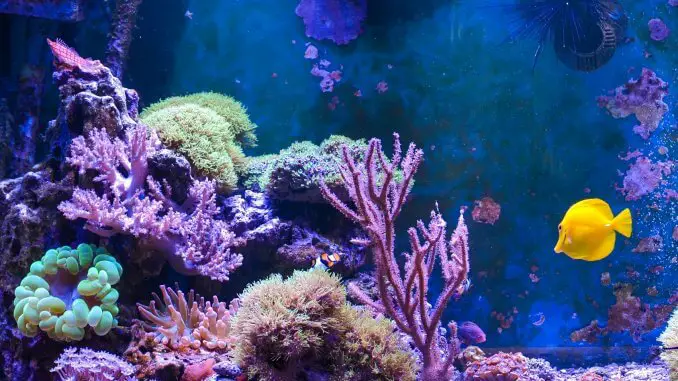
Salt, along with water, is the first building block of your saltwater aquarium.
Reef ecosystems are very delicate and choosing the right salt mix to best suit your fish is the most important element of creating a successful environment.
There are many options out there, but which one is the right choice for your tank?
Ultimately your fish will give you the answer, but we can help you along the way.
Keep reading to understand more about salinity and the mysteries of recreating seawater in your own aquarium.
What is Reef Salt?
Reef salt is the magic ingredient for your saltwater aquarium.
It is the thing that makes the water in your aquarium salty and helps you replicate natural reef waters.
Reef salt is made up of all the salts and trace elements that you find in seawater such as chloride, sodium, magnesium, and calcium.
These salts will form the salinity of your aquarium (The salinity of the ocean is usually 35 PPT). Salinity is measured in parts per thousand (PPT) describing the concentrations of dissolved salts.
This means that on average every kilogram of water contains roughly 35 grams of dissolved salts with an average density of 1.025 kg/L at the surface. Sodium chloride is the most abundant salt in the ocean with smaller percentages of magnesium and potassium.
Knowing the salinity concentrations in your water is very important especially during water changes. You don’t want to change the levels too much and poison your fish.
As the water in your aquarium evaporates, the salinity increases. This is important to know when replenishing the water, as you can just add freshwater because it will be mixed with the higher salinity waters in the tank and bring the salinity levels back to normal.
You will find that different salt mixes are aimed at different things, from corals to invertebrates to fish. These mixes have different salts and trace element concentrations vital to keep your marine life healthy.
Corals and invertebrates prefer higher carbonate and calcium concentrations and buffers that help in building up their skeletons and shells.
Having a nice colorful tank is one of the best things to look at and show your friends, so these mixes often contain micro and macro nutrients to enhance the colors of your fish.
Comparison Table
| PRODUCT | FEATURES | LATEST PRICE |
|---|---|---|
1. Instant Ocean Reef Salt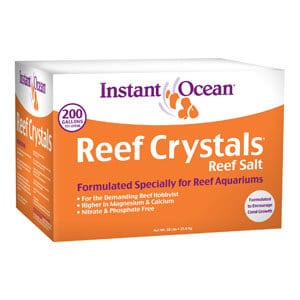 |
| Check Price |
2. KENT Marine Reef Salt Mix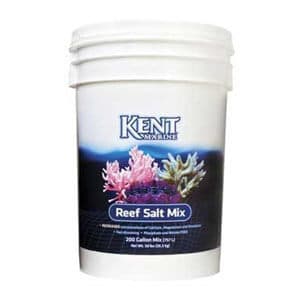 |
| Check Price |
3. Tropic Marin Pro Reef Sea Salt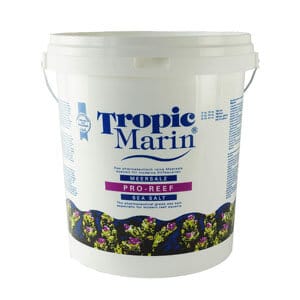 |
| Check Price |
4. Red Sea Coral Pro Salt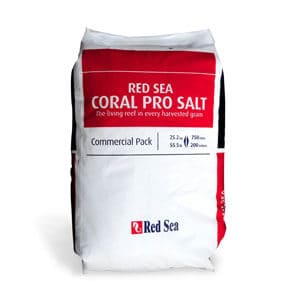 |
| Check Price |
5. Brightwell Aquatics Neomarine Mix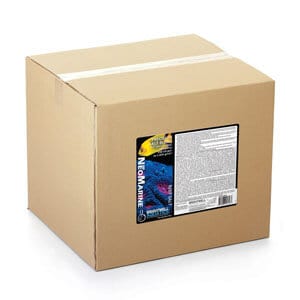 |
| Check Price |
The Best Reef Salt Reviewed
Best Value: Instant Ocean Reef Salt
Best Reef Crystals For Aquariums
This mix is specifically formulated for reef aquariums, containing essential ocean reef elements in even greater concentration than in natural ocean waters.
Pros:
- It does not clump when kept in a closed container.
- Great value for money.
- It mixes into the water easily.
- Do not leave any residue.
Cons:
- Smaller box version needs resealing each time you use it.
- Needs more salt than the recommended ratio to create the right parameters.
Best Value: KENT Marine Reef Salt Mix
Best Value Reef Salt Mix
This mix has been designed to mimic the ocean water and will provide all the necessary minerals for your reef setup.
Pros:
- It is well priced.
- This brand is well known and widely available.
- Do not leave a residue.
- Very fine and dissolves quickly.
- Enhanced with calcium, strontium, iodine, minerals, and vitamins.
Cons:
- The calcium levels are a little high.
- It is not very well packaged in box form.
- No labeling on the bags inside the box.
Premium Reef Salt: Tropic Marin Pro Reef Sea Salt
Pharmaceutical Grade Reef Salt
This large 200-gallon bucket is a pharmaceutical-grade sea salt designed for modern reef aquariums.
Pros:
- This is great if you have a wide variety of corals in your tank.
- Completely dissolves and leaves no residue.
- High-quality reef salt mix.
- Available in different sizes to suit your tank.
Cons:
- It is expensive.
- No labeling or branding on the bag.
Best Reef Salt: Red Sea Coral Pro Salt
Marine Salt Ideal for Mixed Reefs
This salt mix is designed to encourage and accelerate the growth of the corals in your reef aquariums.
Pros:
- The bag option is cheaper than the bucket option.
- 72% naturally harvested salt from the red sea.
- This is great quality salt.
- It is quick to dissolve.
Cons:
- You might want to store it in a closed container.
- It is quite expensive.
Specially Formulated Reef Salt: Brightwell Aquatics Neomarine Mix
High Quality Blended Reef Salt
A precision salt blend for reef aquariums, this special formulation has been extensively researched and tested to create the perfect blend.
Pros:
- High quality, specifically formulated salt.
- It is made in America.
- Highest purity ingredients available.
- Your fish won’t be able to tell the difference from real seawater.
Cons:
- You may need to measure salinity and hardness with each batch.
- It is relatively expensive.
- Comes in a box rather than a bucket.
Does Your Aquarium Need Reef Salt?
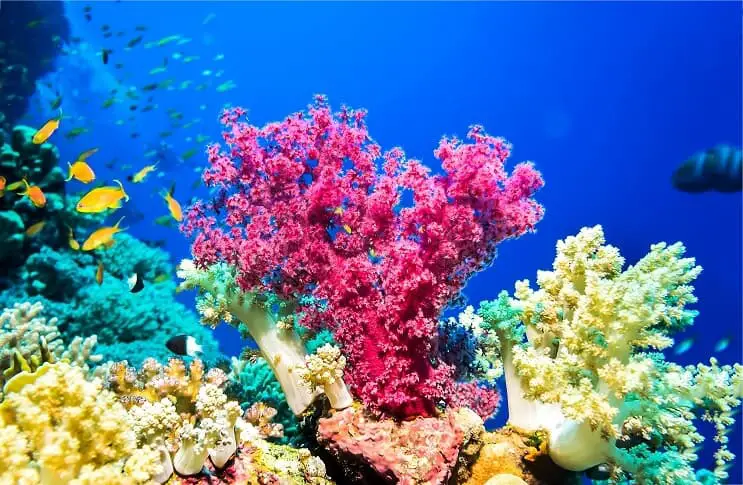
Reef salt is best added to tanks that have fish and animals found in a coral reef.
Once you have decided on the animals that you want, you have to build the perfect environment for them, from tank substrate to decorations. But the most important element in saltwater aquariums is the water.
Normally, ocean water conditions are variable, with differing temperatures and salinity.
Variations in temperature and salinity create different water densities that change with different water currents. Water density can change so much between different currents that oceanographers use it to trace water movements.
Due to the amount of life surrounding ocean reefs, these environments are often nutrient-limited, meaning the waters are very low in nitrate and phosphorus. Therefore, it’s important to understand whether your saltwater tank needs specific reef salt.
It is very important to start right from the beginning, with the water. Domestic water supplies are generally not fit for saltwater aquariums as the levels of nitrates and phosphates are very high.
Before adding water to your tank, you should purify it to eliminate any dangerous contamination and toxic compounds.
Reverse osmosis, deionization, and ion exchange are some methods that are generally used.
You can also have a combination of reverse osmosis and deionization known as RODI units.
Once you have dealt with the water, the salt will be much easier. Different brands often have slightly different chemical formulas altering the amount of salts and trace elements present in the water.
Like most things fishkeeping, there is no right or wrong answer. You will need to research and find the best combination to suit your unique setup.
Reef Salt vs Marine Salt
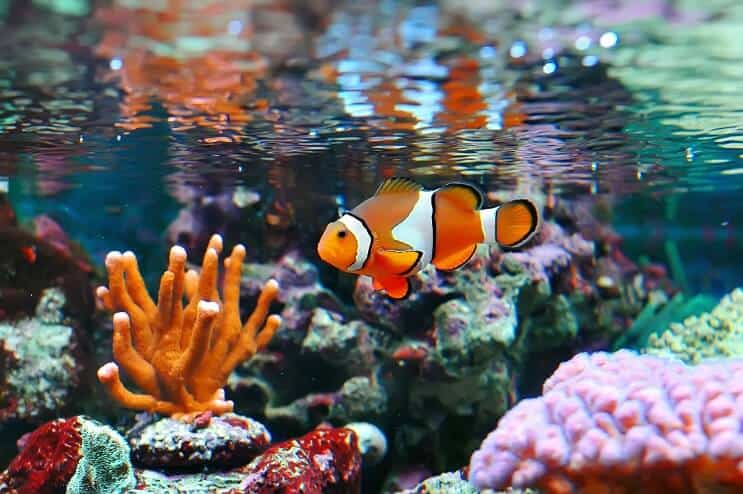
Reef salt, marine salt, crystals, there are many options out there to choose from. But what is the difference and what is best for your tank?
Each of these is a different combination of salts. To understand the differences properly you need to look at their chemical composition.
Reef salt has a higher calcium, iodide, and magnesium concentration than marine salts.
Both have very low levels of nitrates and if tested, should give a negative result.
They all aim to mimic seawater’s natural condition, but reef salts have been designed for coral reef environments while marine salts have been designed for a more general marine environment.
On some occasions these salts are interchangeable, and you will be able to use either of them as long as the salinity stays around 35 PPT.
Although salinity is not everything, reef salts will also help to maintain the right alkalinity and pH with essential and non-essential components such as cadmium, silicate, nitrate, phosphate, beryllium, and arsenic.
Calcium is a very important aspect for coral reefs – without this element, corals and shells cannot calcify and build up their own skeletons and protection.
Therefore reef salts’ chemical composition is aimed to replicate the natural condition of a reef system in a closed saltwater aquarium to make your inhabitants feel at home.
How To Choose The Best Reef Salt?
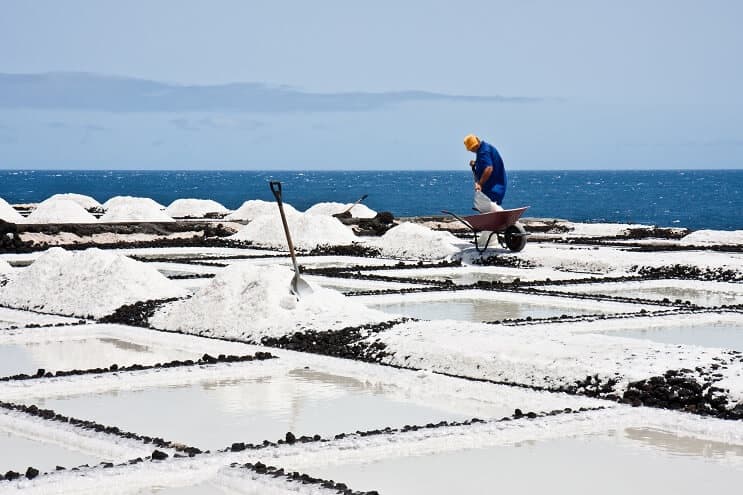
Picking the best reef salt is one of the biggest dilemmas.
It all depends on the organisms that you want in your tank.
Different brands have slightly different chemical compositions and everything comes down to how your fish reacts to the mix.
You can start with one type of mix and switch to another one to find the best balance.
The main thing to look at when choosing a mix is the content of phosphates and nitrates – both must be negative and result as negligible.
Coral reef ecosystems are nutrient-limited due to the amount of life they sustain, therefore the animals are used to low nitrate concentrations. If these concentrations spike for a long period of time, it will be detrimental to your fish.
Other things to consider are their composition – calcium, magnesium, and alkalinity are good starting points.
- Calcium is one of the most important elements as it is part of the building blocks of reef organisms. The recommended concentration is 400 PPM.
- Magnesium is one of the most abundant trace elements in seawater, and balance water alkalinity in your tank. 1250 PPM is the recommended concentration for saltwater closed systems.
- Alkalinity can greatly affect pH so it is important to keep an eye on it. The recommended levels are 8-11 dKh for saltwater aquariums.
Look for the general levels of the elements listed above for a good start.
How Much Reef Salt Do You Need?
To understand how much reef salt you need, we have to talk a little bit about salinity and what makes seawater so salty.
The oceans cover about 70% of the Earth’s surface containing 97% of the water present on Earth. The other 3% is contained in freshwater systems, glaciers, and icecaps.
If you were to dry the planet, the salt contained in the oceans would cover us to a depth of 5 feet.
So when you are setting up a saltwater aquarium, salt is fundamental for a successful and healthy environment.
Salinity varies across the ocean depending on depth, evaporation, and many other factors. Generally, this can vary from 31-38 PPT. Salinity is usually at around 35g per liter of water. As discussed earlier, grams per liter is the same as saying PPT.
This means that in every liter of water you will need 35g of salt. This is equal to about 4.7 ounces of salt per gallon of water. However, this might change for certain brands so make sure to read the label for your reef salt.
How Do You Mix Reef Salt?

Mixing reef salt varies from product to product, so you should follow the instructions with each product.
However, here is a general overview with some useful tips too.
Firstly, make sure that the water you are using is correct. The water from your tap is high in nitrates and phosphates and also contains further invisible things that is damaging for your tank’s inhabitants. Choose the best way to purify the waters and then add the reef salt.
You should always mix the water before adding it to the tank, to allow the salts to dissolve easily. When mixing reef salts always remember the golden rule of 35 g for a liter of water or 4.7 ounces per gallon.
Try and check the salinity as you are adding the salt to make sure to get the right concentration. You should add more water to lower the salinity. Or if you need to increase the salinity, add more salt.
You can use some simple math to be more precise.
First, measure the salinity which you already have.
For example, it might be 31 PPT for 100 liters of water. You still have 4 PPT missing to get the 35 PPT final concentration. Therefore, 4 grams (the same as PPT) * 100 L = 400 grams of salts.
On the other hand, if you have a salinity of 40 PPT in 100 liters of water you will have to add about 115 liters of water. This is calculated as (40 PPT / 35 PPT) * 100 L= 114.9 L.
Just keep in mind that when you add more salt to your aquarium you are also altering the alkalinity, calcium, magnesium, and other components.
To accurately measure salinity you can use either a refractometer or hydrometer.
Best Reef Salt FAQ
We all want only the best for our aquarium and its inhabitants, so that is why finding the best reef salt mix is all the more important. You probably have lots of unanswered questions about reef salts that you need clearing up. That is why we have put together this frequently asked questions section along with their answers.
There is no such thing as a silly question when it comes to fish keeping and tank maintenance. We hope the following section helps you.
Q: Can you mix different reef salts?
A: You shouldn’t mix different reef salts. Pick one that suits your reef tank and stick to it for a while.
Q: How long will reef salt last?
A: Reef salt can last indefinitely as long as you keep your aquarium salt mix closed properly and you do not allow water to get into the packet.
Q: How long will Instant Ocean reef crystals and Instant Ocean reef salt last?
A: You will find a use-by date on the packet; however, just like any other salt mix, it can last indefinitely if stored under the right conditions.
Q: How much salt do I need for my reef tank?
A: One or Two tablespoons of reef salt per gallon should be enough.
Q: Why isn’t my salt dissolving?
A: You may be using too much salt in your reef tank.
Q: What’s the Best Reef Salt to Use?
A: Red Sea Coral Pro marine salt and NeoMarine marine salt are two of the best reef salts for your tank. The best reef salt will be the one that suits your tank inhabitants. You should always choose a reef salt that goes well with the coral in your tank.
Q: What is the Best Salinity for Your Reef Tank?
A: Between 34-36 ppt is ideal, although this will change depending on your aquarium temperature. Make sure you have enough calcium and magnesium in your aquarium in order for your reef to thrive.
Q: Is Reef Crystals Good Salt?
A: This salt is fantastic and one that anyone should use if they are in doubt or new to keeping a reef tank.
Summary
Best Reef Crystals For Aquariums
This mix is specifically formulated for reef aquariums, containing essential ocean reef elements in even greater concentration than in natural ocean waters.
Salt is one of the most important parts of your saltwater tank.
You want to get the best salt mix for your unique setup.
Reef salt offers the best solution for reef ecosystems to maximize the well-being of your fish and coral.
There are many different brands, all of which have slightly different components. It is your job to experiment and find the best solution for your fish.
Once you have the right reef salt and purified water, you can start mixing them. The golden rule is to have a salinity of 35PPT. Different environments and fish might prefer different salinity so always double-check specific species’ optimal salt concentration levels.
What do you think is the best reef salt? Let’s talk about it in the comment section below…


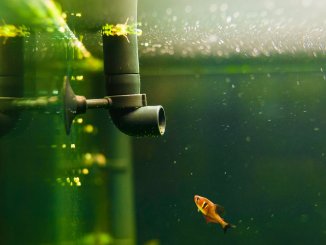
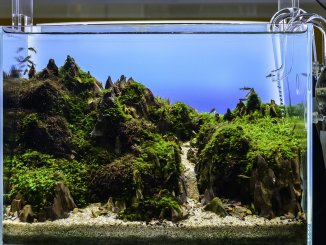
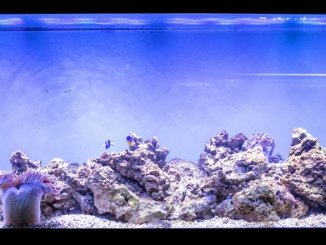
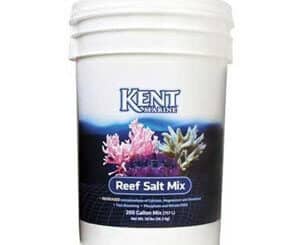
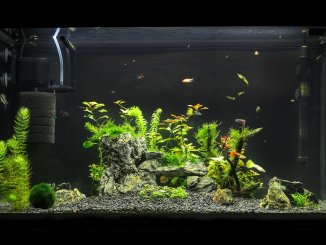
Be the first to comment